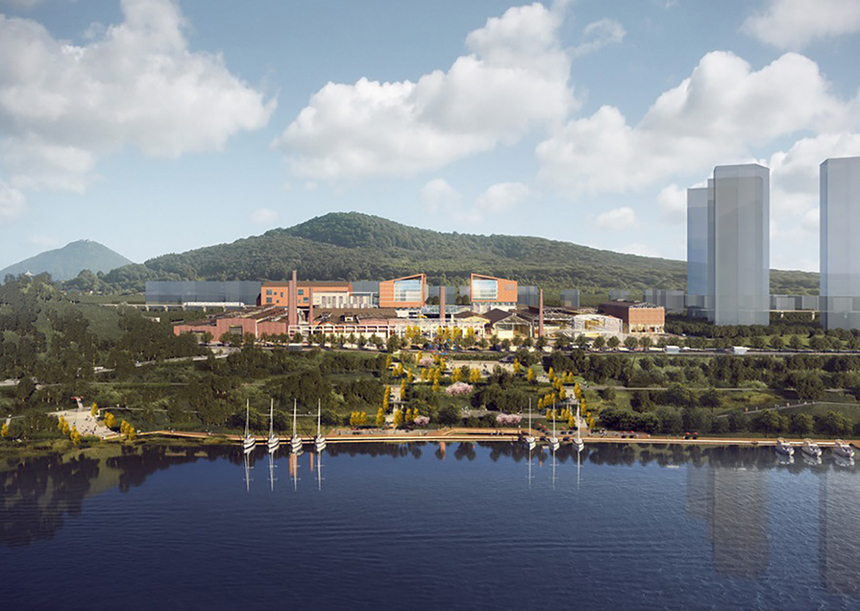
"If Chongqing wants to build an industrial museum,
One place must be reserved for Chongqing Special Steel Plant"
In the 1960s, the two most famous arsenals in Shapingba, except for the Chongqing Jialing Plant, were the Chongqing Special Steel Plant, known as the "Ten Mile Steel City". The predecessor of the special steel plant was the Chongqing Electric Power Steel Plant in 1919. In 1934, the preparatory committee for Liu Xiang, chairman of Sichuan Province, was rebuilt in a revitalized manner. It was known as the mother of all industries in the southwest, which shows its ambitious ambition to lay the foundation for China's rise. With the economic transformation and industrial upgrading, those old factories that carry the memories of the times and branded with the industrial mark will eventually fade away in our memory.
Nowadays, under the background of "Double Urban Repair" and "Two Rivers and Four Banks" planning, where will the special steel plant go and how to carry out the industrial transformation of Binjiang, this heavy issue is once again before the people of Chongqing.
This project is located in the special steel plant plot in the Ciqikou area of Shapingba, Chongqing. It faces the Jialing River in the east and the first bay into the city, and the Gele Mountain in the west. It has the characteristics of a typical Chongqing landscape city and is a rare riverside cultural value highland in Chongqing's "two rivers and four banks".

▲Location Map of Special Steel Plant
Based on similar successful cases around the world, we study many cases ranging from the old steel plant in Duisburg, Germany to the Oberhausen industrial mining area to the Turin Industrial Heritage Park in Italy. Industrial remains are no longer cold steel and masonry. Through landscape reconstruction, industry implantation, industrial transformation, and cultural upgrading, they have gradually become an important cultural vitality center of the city.

▲A bird's-eye view of the riverside of the special steel plant
As the former Dean of the Palace Museum Shan Jixiang said, “For many cities, industrial relics with historical stories and local characteristics are the best resources, and they will play an important role in shaping the city’s culture.” And the special steel mills themselves are many. The advantageous conditions, coupled with the blessing of the scarce Chongqing landscape pattern, will surely represent Chongqing as a model for the development of Chinese industrial heritage tourism and even a world-class vigorous riverside model.
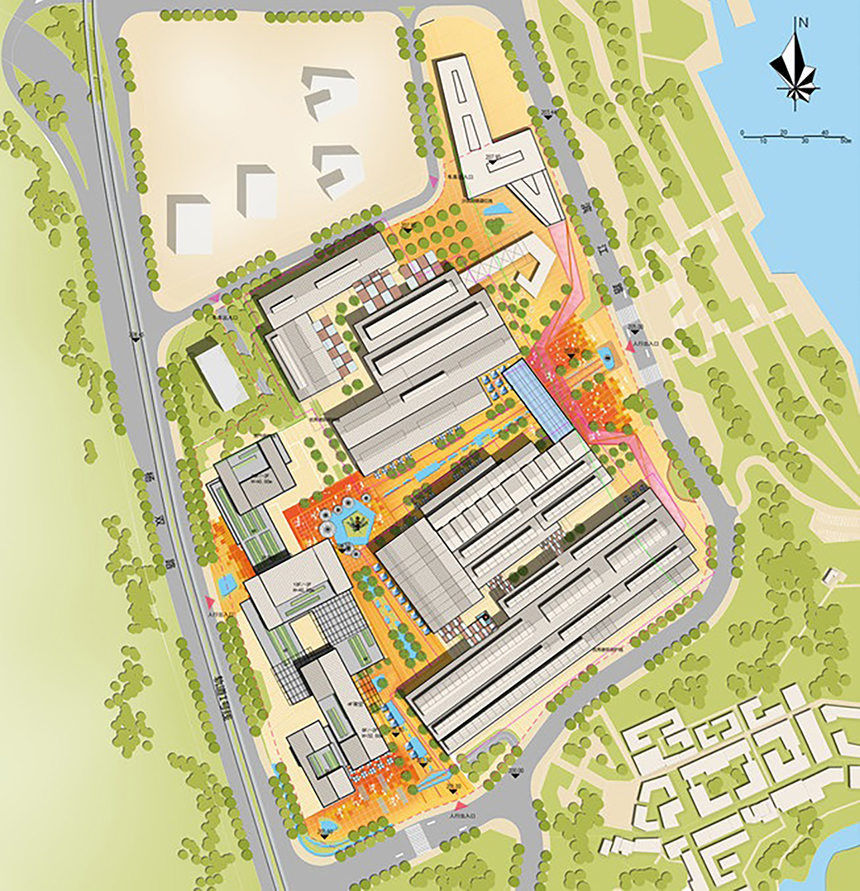
▲General floor plan
1 Regional linkage: Link surrounding resources in a wider area to build a complex tourism circle
The design examines the special steel plant from a broad perspective, aiming to create a 5A-level tourist attraction with the core characteristics of Ciqikou Ancient Town, Special Steel Plant, "Red Slag White", and Gele Mountain Scenic Area. Integrate multiple scenic spots, enrich the tourism themes and tourism formats of the tourism circle, extend the expansion of tourism service functions, form a large tourism linkage circle, and present a regional cultural community in the "two rivers and four banks".

▲Map of regional linkage development model
2 Revealing the mountains and dews: Taking water as the curtain and mountains as the scenery, creating Chongqing's world-class riverside keynote
Following the overall planning requirements of Chongqing's "Two Rivers and Four Banks", the design reasonably controls the height of the building, and reserves urban corridors to open the riverside space at important locations, presenting a world-class riverside industrial park with visible mountains and waters that highlights the characteristics of the Chongqing site.

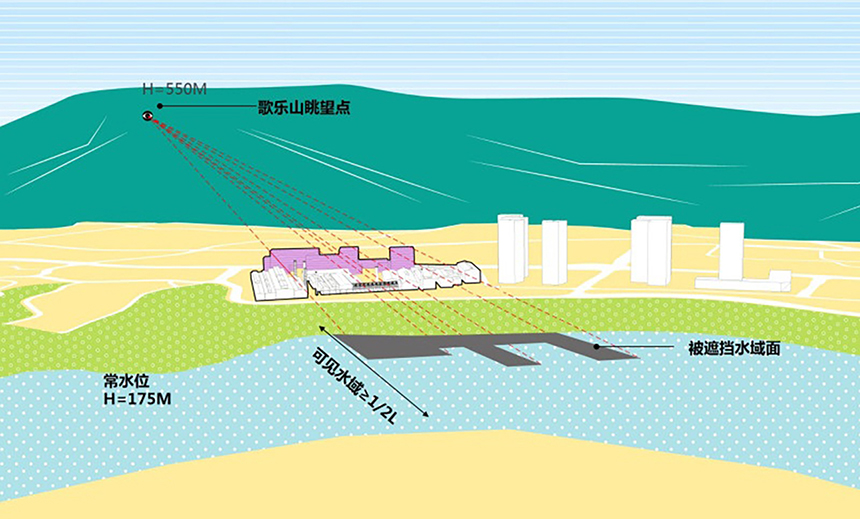
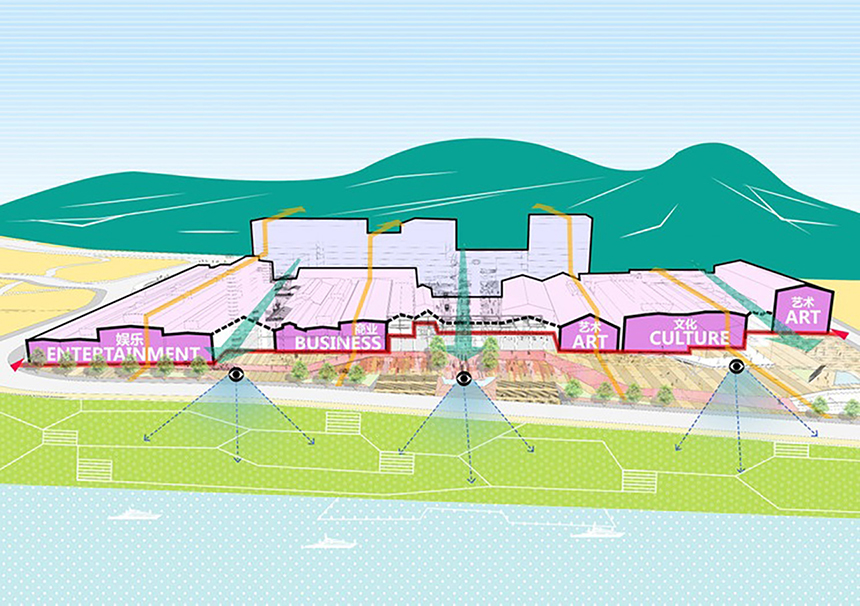
▲Schematic diagram of landscape pattern
3 Cultural reproduction: architecture, landscape, activities, dig out the core of industrial culture layer by layer
Architecture: Architecture is the most intuitive cultural symbol of a special steel plant. Layers of deconstructed building volumes, truss forms, and red brick asbestos louver color textures are used as design elements and design references, with a low profile and low impact Ways to reshape a cultural complex that serves the functional demands of the old factory.
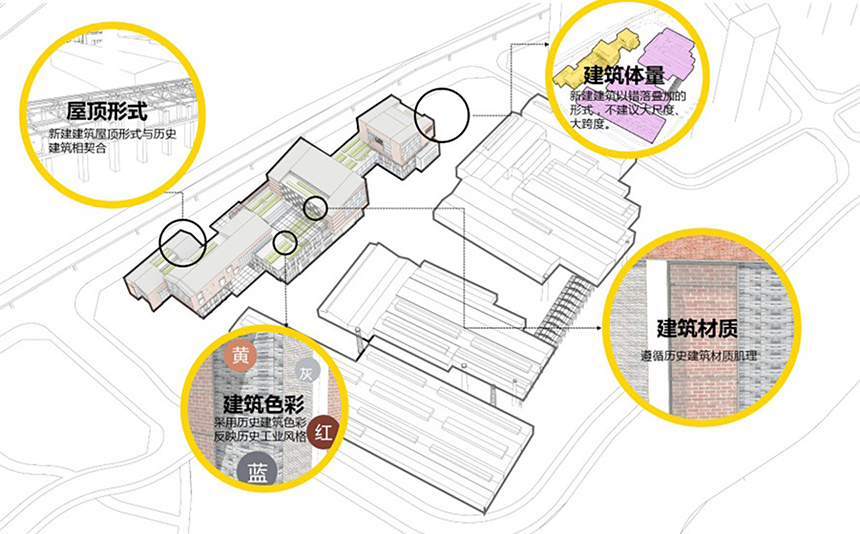
▲Comparison of new and old buildings
Landscape: Broken chimneys, mottled rolling mills, broken boilers...have become the unique characteristic language of the special steel plant in the industrial era, and have participated in the reconstruction of the entire special steel plant landscape system, becoming the visual focus of the park and the spiritual fortress of the industrial history of the plant . They invaded the landscape with a "rough" attitude, forming a strong contrast and impact with the carefully set vegetation and waterscape, unexpectedly inspiring the unique aesthetics of industrial ruins in the post-industrial era.
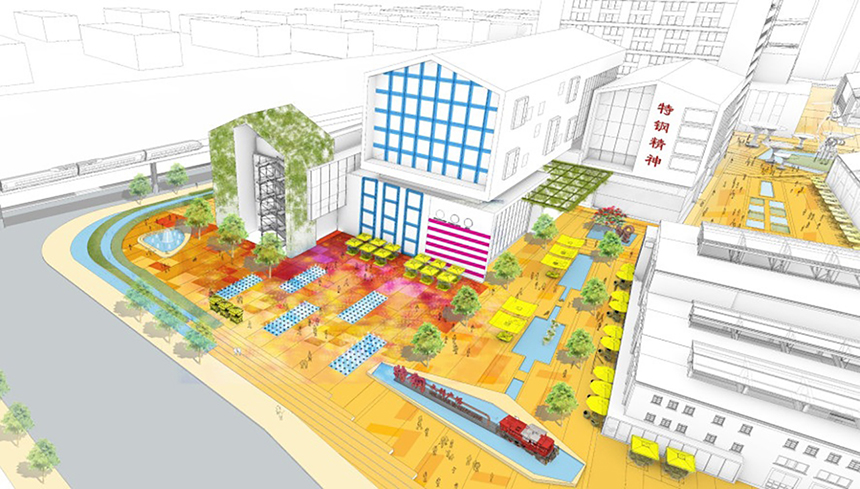
▲Landscape of Gateway Plaza
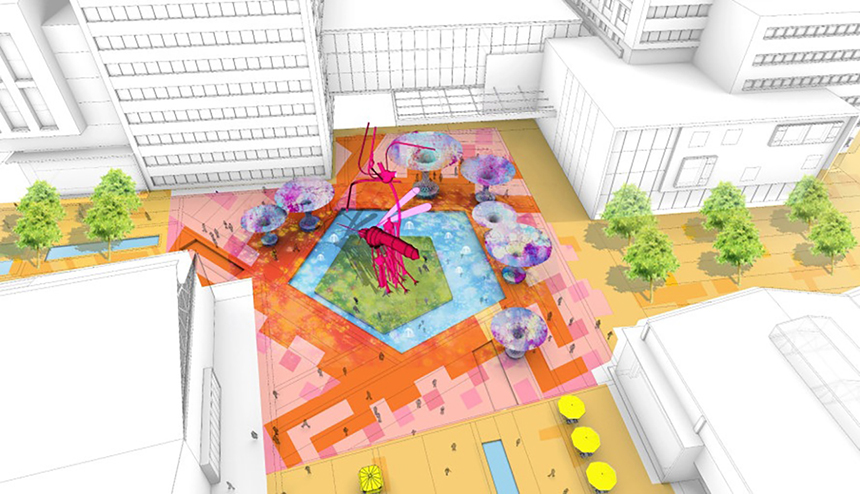
▲Central Industrial Sculpture Landscape
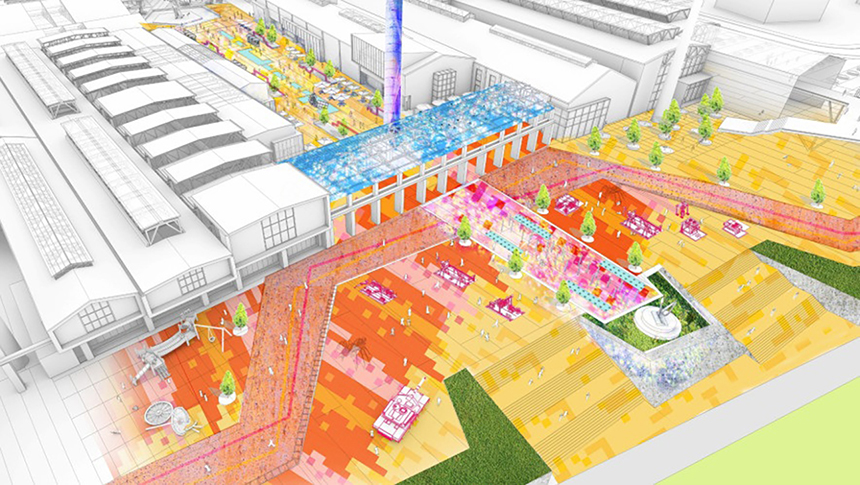
▲Landscape of Binhe Square
Activities: In fact, from the perspective of the construction of urban cultural identity, people, places and products are the three essential basic elements. In terms of place construction, we try to stimulate the industrial cultural imprint of the special steel plant to the greatest extent. As for the definition of the role of people, we have strengthened the role of "special steel plant people" and evolved corresponding functional products based on their previous activities. In accordance with the development needs of the times, it has implanted composite functions such as cultural creation, office, and business, and introduced suitable characters. Finally, a complete closed loop of vitality for special steel plants is formed.

▲Crowd activity circle
4 Diversified space: using "industry+" as a technique to build a fusion link between the old and the new
The space here refers more to the external public contact space. In terms of the design concept, we hope to build an industrial art corridor that runs through the old and new buildings, and assume a continuum that is compatible with the differences in site elements and the differences between the old and new cultures, so that the whole is harmonious and unified.

▲Public Corridor Map
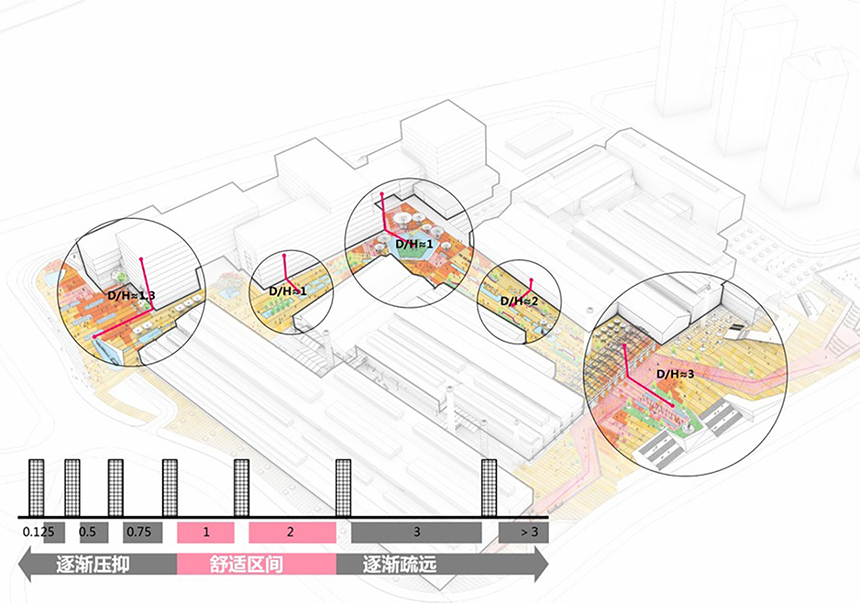
▲D/H relationship diagram of public corridor
In terms of design method, with the posture of “interpreting” the site rather than “designing” the site, industry is the motif of the interpretation, “industry + ecology” interprets Binhe Park, “industry + culture” recalls the memory and interpretation of the era, and “industry + creativity” Construct modern creative office and services. Fully integrate its regeneration process with site characteristics and citizens' lives, and make it a place for interaction between people, site and nature.
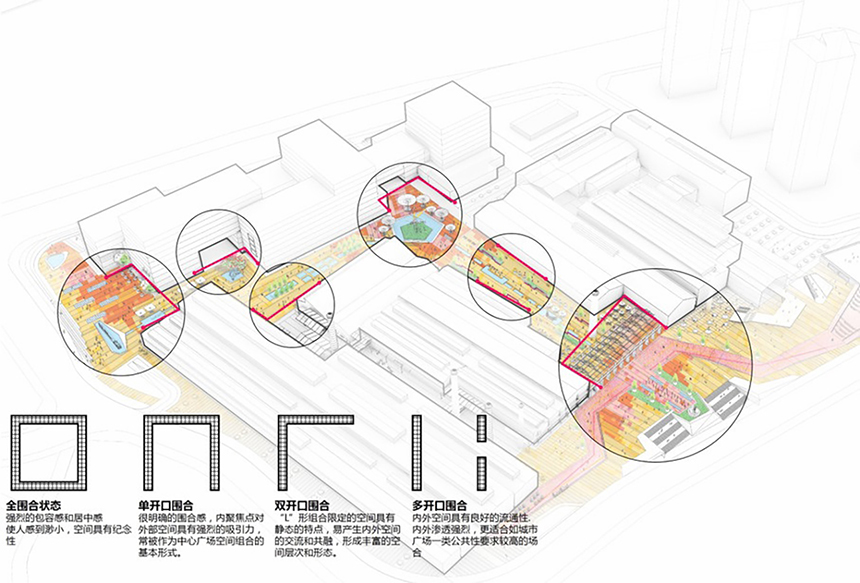
▲Relationship diagram of public corridor enclosure

▲Schematic diagram of street relationship optimization
5 Multi-dimensional transportation: organize human-oriented and efficient multi-dimensional transportation
Carefully organize transportation, take the customer group as the guide, integrate the surrounding transportation resources, build the three major transfer systems of water, road, and rail to meet the arrival demands of diverse customer groups, and realize the integration of mountains, water, people, factories, and cities in the special steel community Efficient three-dimensional interaction.

▲Traffic organization chart
From a larger perspective, the renewal and transformation of the special steel plant is committed to becoming a model for the development of world-class dynamic riverside and China's industrial heritage tourism.
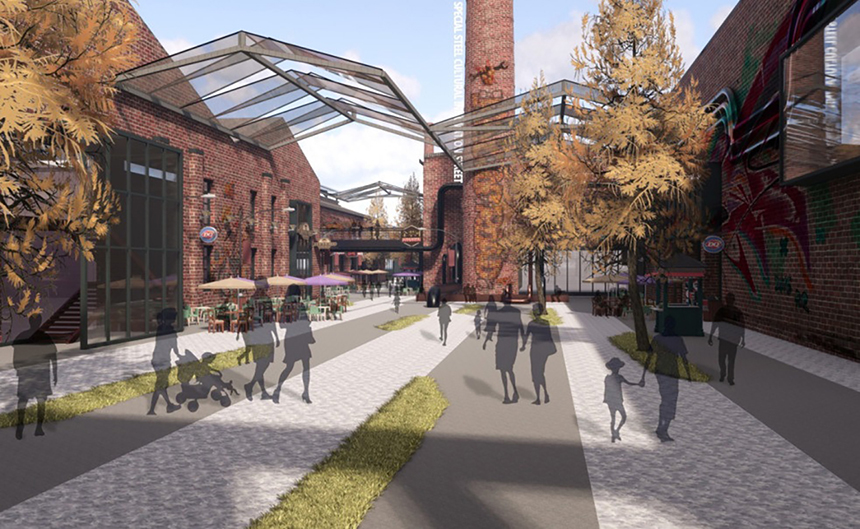
▲Internal street people view
From a smaller perspective, the special steel plant itself is also a community center. It is the spiritual community center of special steel people and the activity community center of surrounding residents. The space evolved from the essence of special steel culture allows people standing here to see the glorious past, enjoy the comfortable present, and look forward to the infinite future.

▲Internal street people view
We call this phenomenon: a sense of belonging to a place. Focusing on people, places, and products, and creating a community space with a more sense of place and belonging is also the goal of Zhubo people.
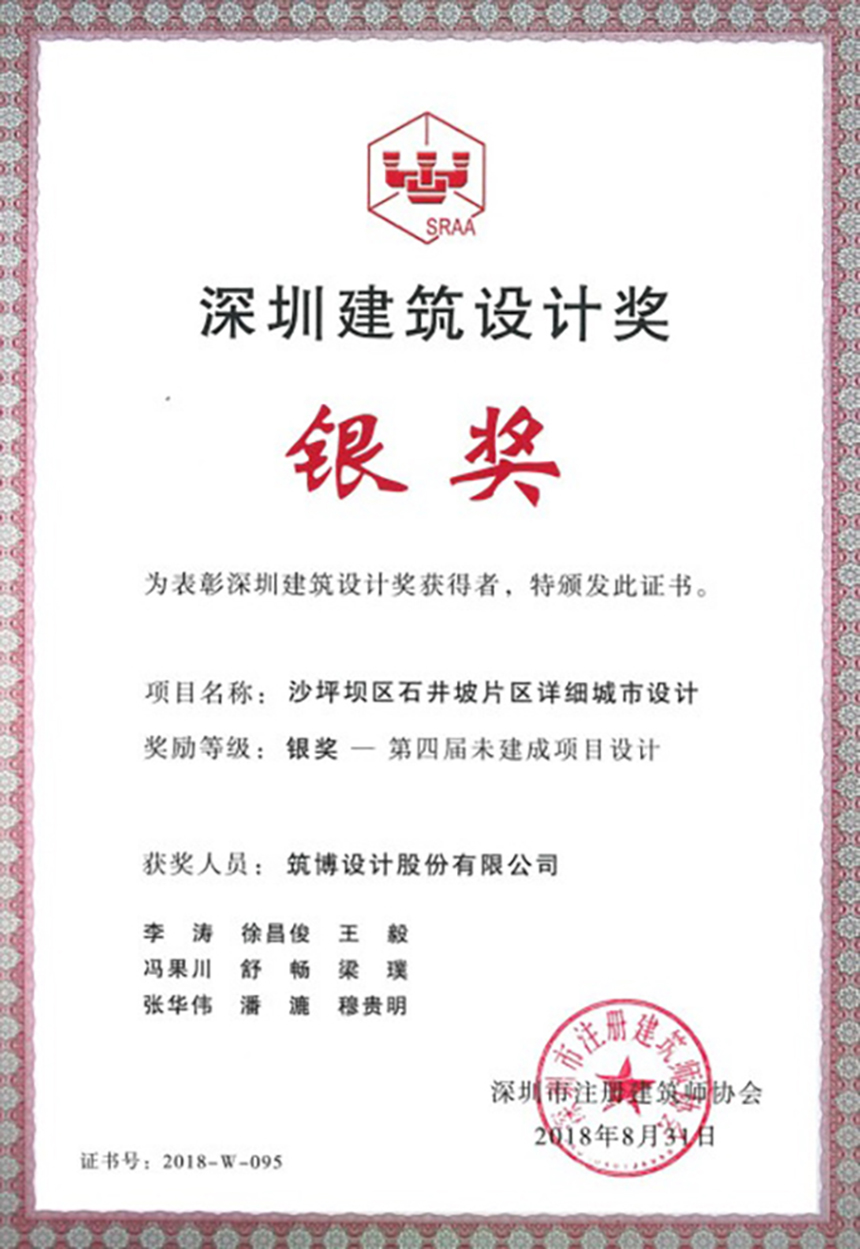
▲This project won the Silver Award of Shenzhen Architectural Design Award
Design company: Zhubo Design Co., Ltd.
Project address: Shapingba District, Chongqing City
Land area: 420,000 square meters
Ground floor area: 180,000 square meters
Underground construction area: 80,000 square meters
Design year: 2018
Project status: Design completed
Project owner: Chongqing Municipal Planning and Natural Resources Bureau
Chief Architect of the Project: Wang Yi
Project Chief Planner: Li Tao
General Consultant of the Project: Xu Changjun, Feng Guochuan
Project designers: Zhang Huawei, Shu Chang, Liang Pu, Pan Luo, Mu Guiming, Zhou Meilin, Yi Qin, Zhou Hua